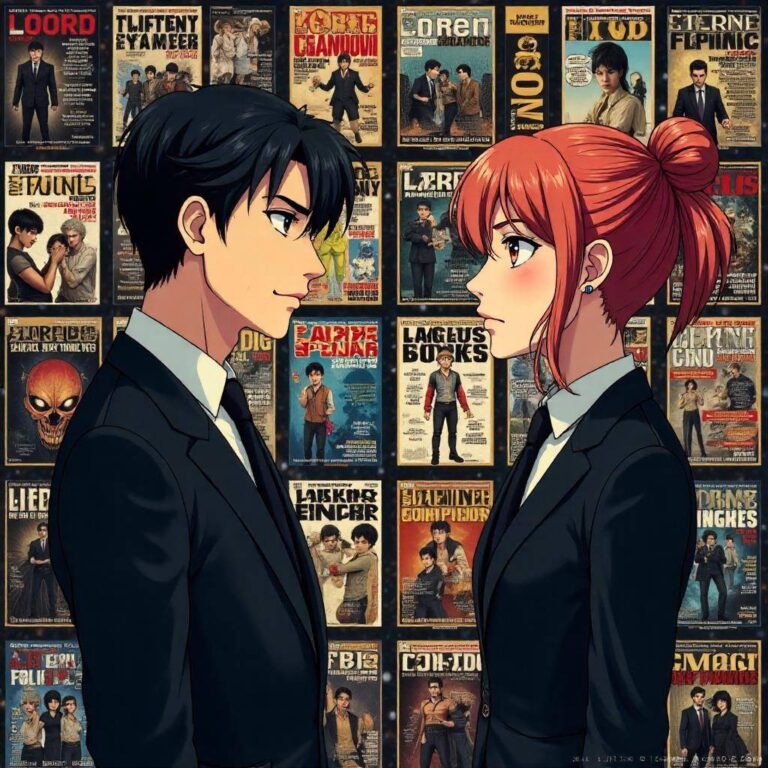Reader’s Question:
I’m trying to decide whether I should watch the Demon Slayer anime or read the manga. Which one do you think is better?
Choosing Between Demon Slayer: Anime vs. Manga
When it comes to the world of anime and manga, few titles have made as significant an impact as Demon
Slayer: Kimetsu no Yaiba. With its breathtaking animation and compelling storytelling, it has garnered a massive following both in Japan and overseas. But for newcomers trying to decide whether to dive into the anime or the manga, the choice can be daunting. Having consumed both forms, I’d like to share my thoughts, insights, and experiences regarding Demon Slayer, hoping to help you make an informed decision.
The Essence of Storytelling
At its core, Demon Slayer tells the tale of Tanjiro Kamado, a young boy who becomes a demon slayer after his family is slaughtered by demons and his younger sister Nezuko is turned into one. The plot is simple yet deeply emotional, exploring themes of family, loss, perseverance, and what it means to be human. While both the anime and manga convey these themes powerfully, the mediums offer different experiences. The manga, created by Koyoharu Gotouge, provides the raw emotional depth in its artistic style and pacing, which can sometimes be lost in the fast-paced nature of anime. The ability to pause on a panel, to linger on a character’s expression or a beautifully illustrated background, allows you to absorb the story more intimately. On the other hand, the anime amplifies the emotional intensity of the story through music and voice acting. For instance, the iconic soundtrack, composed by Yuki Kajiura and Go Shiina, elevates scenes to levels that the manga can only imply. The emotional weight of Tanjiro’s struggles is often conveyed through the music and voice performances, such as Natsuki Hanae’s heartfelt portrayal of Tanjiro.
Personal Reflection: My Journey with Both Mediums
Let me share a personal experience. When I first heard about Demon Slayer, I decided to pick up the manga. I was captivated by the art style—Gotouge’s ability to convey motion and emotion through still images is nothing short of breathtaking. The panels where Tanjiro wields his sword with determination, or where Nezuko’s eyes flicker with a hint of humanity, resonated deeply with me. However, after reading the manga, I was eager to see how the story would translate to the screen. I remember the moment I watched the first episode of the anime. The animation studio Ufotable went above and beyond, delivering a visual feast that brought the manga’s art to life. The fight scenes were choreographed with such precision that I felt like I was watching a live-action film. That said, I also encountered moments in the anime where the pacing felt rushed, especially in parts where the manga took its time to explore a character’s emotional state or backstory. Some fans have expressed similar sentiments, noting that the anime sometimes glosses over the subtleties that the manga masterfully captures.
Cultural Significance: The Rise of Demon Slayer
Demon Slayer is not just a story; it represents a significant cultural phenomenon. Its rise mirrors the increasing popularity of anime and manga globally, marking a shift in how these mediums are consumed. The anime adaptation has introduced countless new fans to the world of anime, many of whom might not have considered picking up a manga. This phenomenon has sparked discussions about the differences in storytelling techniques between the two mediums. In Japan, the manga industry has long been revered, with many creators believing that the story is best told through static images and text. However, the success of the anime adaptation has shown that there is an audience for dynamic storytelling as well. In particular, Demon Slayer’s impact on the anime industry has been profound. Its success has led to a resurgence of interest in shonen anime, encouraging other series to be adapted into high-quality animations. This trend is also evident in the increasing investment that studios are making in animation, ensuring that future adaptations maintain high standards.
Character Development Insights
One of the standout features of Demon Slayer is its well-developed characters. The manga allows for deeper exploration of characters’ motivations, backstories, and relationships. For example, the character of Zenitsu Agatsuma often serves as comic relief, but in the manga, his character arc receives more attention, showcasing his growth and inner struggles. In contrast, the anime excels in portraying these moments through animation and voice acting. The emotional breakdown of Zenitsu during his moments of vulnerability is amplified by the voice acting of Nobuhiko Okamoto, which adds layers to his character that might not be as impactful in the manga. Similarly, Nezuko’s character development, the struggles she faces as a demon fighting her instincts, is beautifully illustrated in both formats. The manga provides a slow-burn approach, allowing readers to appreciate her journey fully, while the anime uses visual cues, such as her facial expressions and body language, to enhance the storytelling.
Storytelling Techniques: Manga vs. Anime
The storytelling techniques utilized in Demon Slayer highlight the strengths of each medium. The manga often employs a more cinematic approach with panel layouts, allowing for a unique pacing that can create suspense or emotion. The use of silence in manga can evoke powerful feelings, as readers are left to reflect on what they’ve just read, while the anime often fills these moments with sound and music. Conversely, the anime brings the world of Demon Slayer to life through vibrant colors and fluid animation. The fight sequences, particularly those involving Tanjiro’s Water Breathing techniques, are choreographed to perfection. Watching these scenes unfold can be an exhilarating experience that the static images of manga simply cannot replicate. That said, there are moments where the anime takes creative liberties, sometimes altering or omitting scenes to fit the pacing of an episode. While this can be frustrating for manga purists, it’s also a testament to the challenge of adapting a serialized story into a limited number of episodes.
Practical Insights for Fans and Creators
For fans trying to decide how to experience Demon Slayer, I suggest starting with the manga. It provides a comprehensive understanding of the story and characters at your own pace. If you enjoy the manga, transitioning to the anime can enhance your experience, allowing you to witness the story come alive with stunning visuals and music. For creators in the industry, the success of Demon Slayer offers valuable insights into the importance of high-quality adaptations. Investing in animation, voice talent, and sound design can significantly enhance a story’s impact. Moreover, understanding the strengths of both mediums can help creators make informed decisions about how to tell their stories effectively.
Conclusion: Your Journey Awaits
Ultimately, whether you choose to watch the Demon Slayer anime or read the manga comes down to personal preference. Each medium offers a unique experience that highlights different aspects of the story and characters. The joy of discovering Demon Slayer lies in immersing yourself in its world, be it through the pages of the manga or the episodes of the anime. I invite you to share your thoughts on Demon Slayer. Have you experienced both the manga and the anime? What were your impressions? Let’s keep the conversation going and celebrate this incredible story that has touched so many hearts. Anime and manga are more than just entertainment—they are shared experiences that connect us all!



